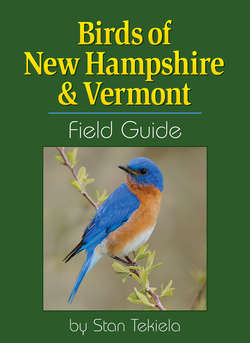Читать книгу Birds of New Hampshire & Vermont Field Guide - Stan Tekiela - Страница 18
На сайте Литреса книга снята с продажи.
ОглавлениеHOW TO USE THIS GUIDE
To help you quickly and easily identify birds, this field guide is organized by color. Simply note the color of the bird and turn to that section. Refer to the first page for the color key. The Pileated Woodpecker, for example, is black and white with a red crest. Because this bird is mostly black and white, it will be found in the black and white section. Each color section is also arranged by size, generally with the smaller birds first. Sections may also incorporate the average size in a range, which, in some cases, reflects size differences between male and female birds. Flip through the pages in that color section to find the bird. If you already know the name of the bird, check the index for the page number. In some species, the male and female are remarkably different in color. In others, the color of breeding and winter plumages differs. These species will have an inset photograph with a page reference and, in most cases, are found in two color sections.
In the description section you will find a variety of information about the bird. On is a sample of information included in the book.
Range Maps
Range maps are included for each bird. Colored areas indicate where in New Hampshire and Vermont a particular bird is most likely to be found. The colors represent the presence of a species during a specific season, not the density or amount of birds in the area. Green is used for summer, blue for winter, red for year-round and yellow for areas where the bird is seen during migration. While every effort has been made to accurately depict these ranges, they are only general guidelines. Ranges actually change on an ongoing basis due to a variety of factors. Changes in weather, species abundance, landscape and vital resources, such as availability of food and water, can affect local populations, migration and movements, causing birds to be found in areas that are atypical for the species.
Colored areas simply mean bird sightings for that species have been frequent in those areas and less frequent in others. Please use the maps as intended–as general guides only.
